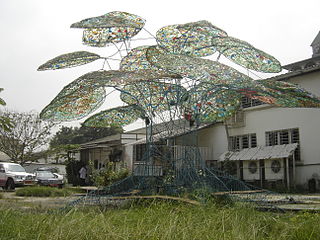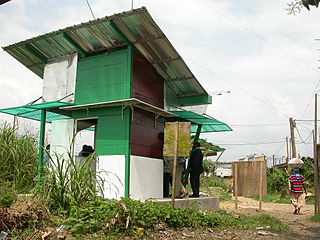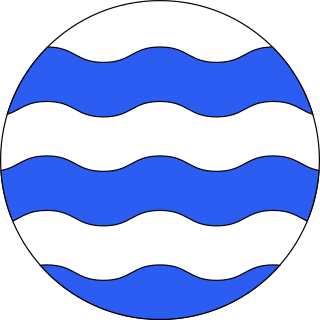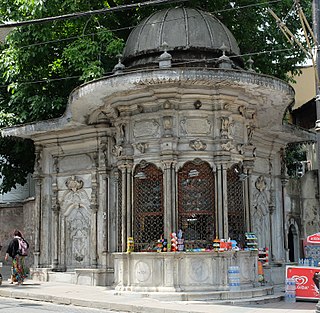 W
WA fountain, from the Latin "fons", meaning source or spring, is a structure which squirts water into a basin to supply drinking water. It is also a structure that jets water into the air for a decorative or dramatic effect.
 W
WAn abreuvoir can mean a basin containing water or a type of masonry joint.
 W
WL'arbre à palabres is a permanent sculpture located in Douala (Cameroon). Created by the architecte Frédéric Keiff in 2007, it looks like a palaver tree, whose trunk and branches are made of painted iron rods, while attached fragments of colored glass represent leaves.
 W
WAn artificial waterfall is a water feature or fountain which imitates a natural waterfall.
 W
WBorne Fontaine is a permanent fountain, from artist Danièle Diwouta-Kotto, inaugurated in 2003. It is located in Douala (Cameroon).
 W
WA cantharus, also known as a phiala, is a fountain used by Christians for ablution before entering a church. These ablutions involve the washing of the hands, face, and feet. The cantharus is traditionally located in the exonarthex of the church. The water emitted by a cantharus is to be running water. The practice of ablutions before prayer and worship in Christianity symbolizes "separation form sins of the spirit and surrender to the Lord." Eusebius recorded this practice of canthari located in the courtyards of churches, for the faithful to wash themselves before entering a Christian house of worship. The practice has its origins Jewish practice of performing ablutions before entering into the presence of God. Though canthari are not as prevalent anymore in Western Christianity, they are found in Eastern Christian and Oriental Christian churches.
 W
WFontana del Bacchino is a 1560 sculptural work by Valerio Cioli (1529-1599) in the Boboli Gardens in Florence featuring a statue in the likeness of the famed dwarf buffoon from the court of Cosimo I de' Medici, Grand Duke of Tuscany, Nano Morgante modeled after Bacchus and riding a tortoise. In 1572 the statue was turned into a fountain.
 W
WFountain or syke is in the terminology of heraldry a roundel depicted as a roundel barry wavy argent and azure, that is, containing alternating horizontal wavy bands of silver and blue. Traditionally, there are six bands: three of each color.
 W
WA fountain square is a park or plaza in a city that features a fountain. It may stand alone or as part of a larger public park.
 W
WThe Fountains of International Expositions in London, Paris, New York and other cities between 1851 and 1964 combined architecture, technology and theatre. They introduced the first illuminated fountains, the first fountains made with glass and other exotic materials, and the first fountains programmed to perform with music.
 W
WGlobalTap is an American company that makes water fountains that provide free water refills for reusable water bottles, with the goal of making clean water more accessible and to cut back use of plastic water bottles. GlobalTap was started by Daniel H. Whitman, an architect from Chicago, Illinois in the United States. The fountain was designed by IDEO.
 W
WA hydraulophone is a tonal acoustic musical instrument played by direct physical contact with water where sound is generated or affected hydraulically. The hydraulophone was described and named by Steve Mann in 2005, and patented in 2011. Typically, sound is produced by the same hydraulic fluid in contact with the player's fingers. It has been used as a sensory exploration device for low-vision individuals.
 W
WA kugel fountain is a water feature or sculpture where a sphere sits in a fitted hollow in a pedestal, and is supported by aquaplaning on a thin film of water. Pressurized water flows between the sphere and socket, creating a mechanical hydrostatic bearing that is nearly frictionless. The sphere can weigh thousands of kilograms, but the efficient bearing allows it to be spun by the force of a hand. The sphere does not float, being denser than water; it is often made from granite. The hydraulics of the fountain can be controlled so that the axis of rotation of the sphere changes continually. Ring sculptures that rotate on an axis are also built.
 W
WThe Minoan Fountain was a monumental public fountain hewn directly from the natural rock. It is located directly behind the Stoa of Antigonos outside the temenos of the Sanctuary of Apollo on the island of Delos. The fountainhouse formalized the use of the sacred spring, and was dedicated to the Cult of the Nymphs.
 W
WA musical fountain, also known as a dancing fountain, is a type of animated fountain for entertainment purposes that creates an aesthetic design. This is achieved by employing the effects of timed sound waves and timed light against water particles. The water refracts and reflects the light, and in doing so, three-dimensional images can be produced.
 W
WA nymphaeum or nymphaion, in ancient Greece and Rome, was a monument consecrated to the nymphs, especially those of springs.
 W
WNymphaeum (Olympia), etymologically "home of the Nymphs," or water goddesses, at ancient Olympia was the official name of a water-distribution structure constructed in the mid-2nd century at that site to provide water to the masses who attended the Olympic Games in July and August. Nymphaeum was the general name throughout the Mediterranean for an ornate structure that terminated an aqueduct bringing water from distant elevated terrain, say a stream or copious springs. This one had substructures, statues, and ornately patterned stonework; its main purpose, however, was functional. It received water from the aqueduct into a cistern and released it by stages into a system of open and closed channels leading around the site. The end partaker of the water carried a secular patera, or small drinking bowl, around with him, dipping into an open trough for the water, as is suggested by the fact that at least some of the statues carried such paterae in one hand. Troughs went everywhere through the site to accommodate the crowds.
 W
WA sebil or sabil is a small kiosk in the Islamic architectural tradition where water is freely dispensed to members of the public by an attendant behind a grilled window. The term is sometimes also used to refer to simple unmanned fountains with a tap for drinking water, though other names often exist for such fountains.
 W
WShadirvan is a type of fountain that is usually built in the courtyard or near the entrance of mosques, caravanserais, khanqahs and madrasas, with the main purpose of providing water for drinking or ritual ablutions to several people at the same time, but also as decorative visual or sound element.
 W
WTacna Ornamental Fountain, is a fountain located in Paseo Civico, the center of the city of Tacna, Peru.
 W
W